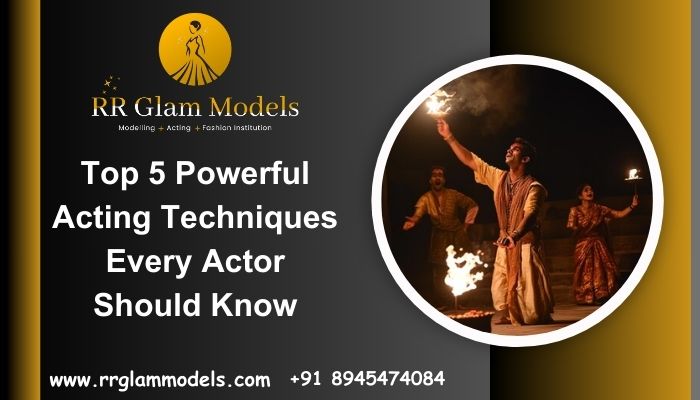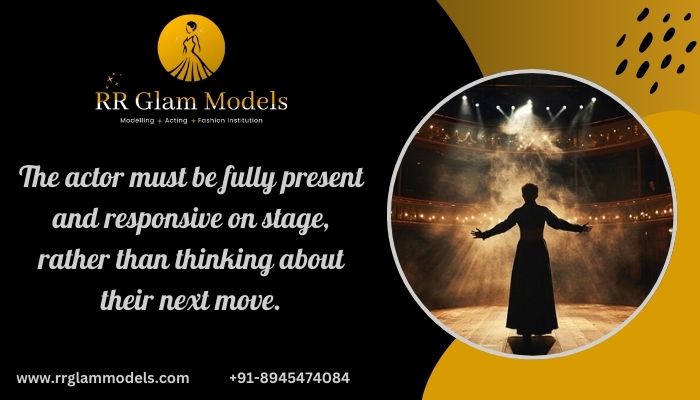Top 5 Powerful Acting Techniques Every Actor Should Know
By: Admin

02 Oct 2024
Acting has existed for a long time, and art has a tendency to evolve along with the times in which it is created. Artists have been challenging traditional expectations since the time of Michelangelo and Picasso.
The statement also applies to the field of acting, as different methods can be used to deliver performances due to the ever-evolving cultural environment.
Therefore, drama schools often teach organized acting methods to expand the perspectives of individuals interested in pursuing a career in acting.
According to the best fashion styling courses in Kolkata, you can focus on a particular field, but the key stays constant. You have to comprehend the artistic challenges ahead & know how to handle them when they arise. So, let’s learn more about it.
1: Stanislavski’s Method
You are undoubtedly familiar with the name Konstantin Stanislavski, or you may anticipate knowing it as well as your own.
His approach to acting is widely accepted as the most universally recognized technique. The concept originates from the strong belief that an actor needs to experience the emotions of the character when performing on stage.
According to Stanislavski’s technique, the actor needs to think, act, and behave authentically as the character does, thus merging with the character.
Analyzing the specific behavior of a character in different scenarios and seeking authentic psychological explanations for their actions. This compels the actor to fully live out their character on stage.
2: Laban Movement
Believe it or not, movement plays a crucial role in acting. It would seem odd if you delivered lines while standing still or kicked a laundry basket as you would a step.
Laban sought to gather all the possible methods for analyzing human movement and went beyond others in measuring it.
By concentrating on four important categories (Body, Effort, Shape, Space), performers can define their stage presence by using different aspects and understanding the connections between them. So, it is essential that the Laban movement is the base of every actor’s training.
- Understanding the body’s internal mechanisms is perceiving how the way limbs are linked/How motion originates from the body/What impacts the body.
- Effort is the purpose behind the execution of movement. The audience’s comprehension of your intentions hinges on the power, the command, and the precision of a movement.
- Shape, on the other hand, is the manner in which a body alters as a result of the motion it engages in.
- Space is something in which a body engages with its surroundings. For example, your walking style/your method of carrying a bucket etc. could be a part of it.
3: The Technique of Michael Chekhov
Michael Chekhov was Anton Chekhov’s nephew and was praised by Stanislavski as his ‘greatest student.’ He has knowledge and experience in acting, and he developed his own method inspired by Stanislavski’s techniques.
The next step focused on separating yourself from the character, reducing your ego and lifestyle to nothing so that only the character being portrayed was left.
Chekhov’s approach involves releasing all preconceived fears and doubts upon entering a creative space, allowing the character’s mindset to take over.
Chekhov believes that truly great performances come from thoughtful mental readiness, rather than haphazard guessing. Therefore, enabling you to seamlessly merge with anyone you desire, fearlessly and distinctively.
Ultimately, actors should embody the essence of humanity in a unique and impressive manner – if you can’t adapt like a chameleon, what kind of actor are you?

4: Sanford Meisner’s Technique
Sanford Meisner aimed to build upon the principles of Stanislavski in developing the character’s mindset. The training program includes intricate exercises that focus on –
- Enhancing improvisational skills,
- Eliciting emotional reactions,
- Analyzing the script, and
- Seamlessly incorporating them
The actor must be fully present and responsive on stage, rather than thinking about their next move. Sanford Meisner’s approach emphasizes the character’s overall emotion rather than the playwright’s simultaneous dialogue.
5: Uta Hagen’s Techniques
Uta Hagen emphasizes on preparation and logical thinking in her techniques. Her belief was that if an actor couldn’t explain their actions, they had no business performing them.
As per best acting colleges in Kolkata, her methods enable actors to examine truth, leading to a more profound comprehension of actuality. Uta Hagen had numerous beliefs, techniques, and exercises to achieve authentic performance. Below are some of them –
- Six stages
- Replacement of one element with another.
- Memory of emotions
- Transfer of emotions or feelings from one person to another person.
- Cartoon drawing or computer-generated images that create the illusion of movement.
- Improv: acting spontaneously without preparation.
Uta thought it was essential for an actor to genuinely bond with the character, relationships, and settings in a script. The issue is that you’ll frequently find yourself in unfamiliar situations or unfamiliar places. This is when substitution becomes relevant.
Substitution occurs when an actor switches out a place or occurrence in their thoughts with a memory that they have lived through and can connect with. This enables the actor to be fully engaged and authentic in the moment, without needing to rely on pretending.
Finding Your Own Acting Style
Engaging in various acting methods and drama techniques can assist in cultivating a personal acting style and achieving effective character portrayal and performance. Numerous actors worry about which acting technique to prioritize and frequently overanalyze the decision.
The choice of acting techniques depends on the type of character being portrayed. This is the same for different types of modeling as well.
Being realistic and objective about your acting expectations and the roles you will obtain is crucial. Pay attention to where your strengths are located.
As you gain more experience as an actor, you’ll become more familiar with your own acting style and may notice a trend in the types of roles you are offered.
Many people enjoy watching actors portray the same type of characters in several movies. If you want to improve as an actor, consider auditioning for different genres and challenging roles that push you out of your comfort zone. Experiment and find what works best for you.
Recent News
-

Dressing for Your Body Type: A Complete Guide
26 Mar, 2025
-

-

-

Categories
Archives
- March 2025 (3)
- February 2025 (3)
- January 2025 (3)
- December 2024 (4)
- October 2024 (1)
- September 2024 (4)
- August 2024 (2)
- July 2024 (5)

 M/S RR Glam Models
14 1/2B Lenin Sarani
Kolkata - 700013
M/S RR Glam Models
14 1/2B Lenin Sarani
Kolkata - 700013 rrglammodels@gmail.com
rrglammodels@gmail.com +91 8945474084
+91 8945474084



